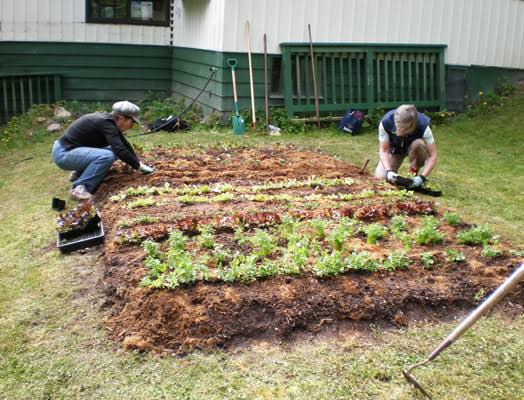
Gardening can be a fulfilling hobby, providing a method for enhancing your environmental factors as well as also a source of fresh produce. However, gardening can be challenging, especially if you need more space or have poor soil quality. That’s where raised bed gardening comes in. You can create a more productive and efficient garden by raising your garden off the ground. And when combined with lasagna gardening techniques, you can create a healthy, thriving garden with minimal effort. In this guide, we’ll walk you through the art of layering, also known as lasagna gardening, in raised beds.
Before we dive into the specifics of lasagna gardening, let’s talk about the benefits of raised bed gardening. Raised garden bed offer several advantages over traditional in-ground gardening. For one, they provide better drainage, especially if your yard has heavy clay soil or poor drainage. Additionally, raised beds to warm up faster in the spring, which means you can start planting earlier in the season. Plus, you can work in your garden without having to kneel or bend over, which makes planting more agreeable and open for individuals with portability issues.
Now, let’s talk about lasagna gardening. This technique is called lasagna gardening because, like making lasagna, you’re layering different materials on top of each other to create a fertile growing environment for your plants. The idea is to create a no-till garden bed that will suppress weeds, improve soil structure, and feeds your plants over time.
To create a lasagna garden in a raised bed, you’ll need to start with a layer of cardboard or newspaper on the bottom of the bed. This layer will help smother any existing grass or weeds and create a barrier between the soil and the wood of the raised bed. Next, add a layer of compost. This can be homemade compost or purchased compost from a garden center. Use aged manure or worm castings if you don’t have enough compost.
After the compost layer, add a layer of organic material such as straw, dried leaves, or grass clippings. This layer will provide carbon for your compost and help create air pockets in the soil. Next, add a layer of nitrogen-rich material such as kitchen scraps, fresh grass clippings, or blood meal. This layer will provide the necessary nutrients for your plants to grow.
Repeat these layers until your bed is full, making sure to end with a layer of compost on top. The layers should be about 2-3 inches thick each. Once your bed is complete, water it thoroughly to start the decomposition process.
Over time, the layers will decompose, and the nutrients will become available to your plants. The decomposing layers will also create air pockets in the soil, improving drainage and providing space for plant roots to grow. And because you’re not tilling the soil, you won’t disturb the soil structure or the beneficial microorganisms.
When it’s time to plant, make a small hole in the compost layer and plant your seedlings directly into the lasagna garden bed. You can also plant seeds directly into the bed, making sure to cover them with a thin layer of compost.
Lasagna gardening in raised beds is a simple, low-maintenance way to create a productive garden with minimal effort. Plus, it’s a great way to repurpose materials that might otherwise go to waste. You can use anything from newspaper to grass clippings to create the layers, making it an affordable option for any gardener.
Remember to choose the right materials for your garden, including nitrogen-rich green materials like grass clippings and coffee grounds, carbon-rich brown materials like leaves and straw, and quality soil. Use various materials to create a well-balanced, nutrient-rich environment for your plants. With proper care and maintenance, your lasagna garden in a raised bed can produce a bountiful harvest of fresh produce for years to come. And not only will you enjoy the fruits of your labor, but you’ll also be doing your part to promote sustainable gardening practices and reduce waste in the environment.
So why wait? Start planning and building your lasagna garden in a raised bed or garden box today using raised garden bed plans, and experience the joys of productive, sustainable gardening. Whether you’re a carefully prepared groundskeeper or simply beginning, lasagna gardening in raised beds or garden boxes is an excellent way to grow your food and contribute to a healthier planet. With the help of raised garden bed plans, you can easily construct a garden box or bed that fits your needs and space requirements. Using the lasagna gardening technique, you can create a nutrient-rich soil environment that yields bountiful crops season after season. Along these lines, stand by no longer and begin your garden box or raised bed project today using raised garden bed plans and start enjoying the benefits of homegrown, sustainable produce.

